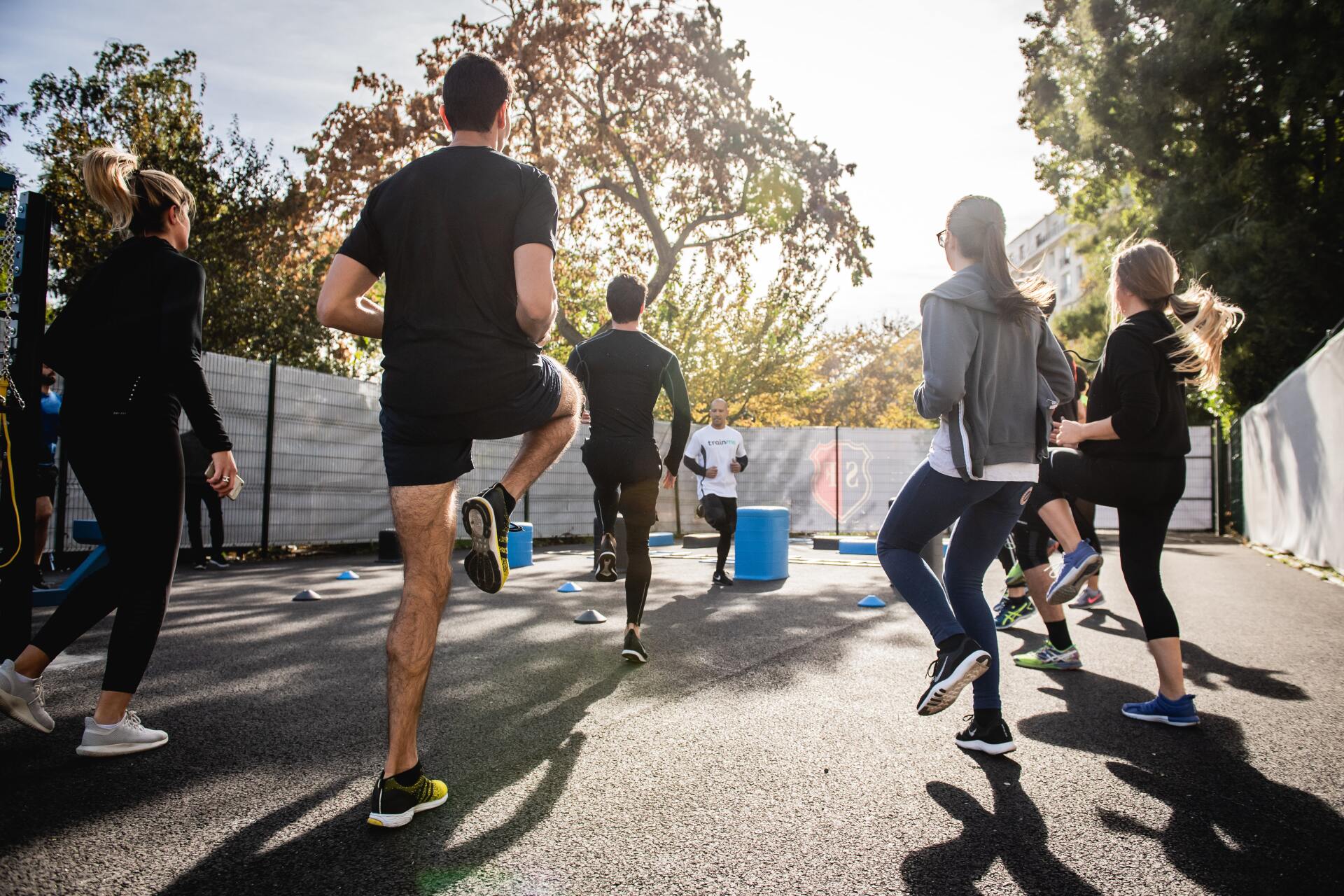Three Levels of Offerings Your Business Can Leverage to Serve More Clients
Consumers make purchasing decisions based on several varying factors.
We'll see everything from convenience, price, trust, understanding, outside influences, alternatives, novelty, and many more come into play during the decision-making process.
With so many factors to sift through, things can quickly become overwhelming when creating your digital marketing strategy.
Today I want to discuss three main areas of offerings you can focus on to help potential clients begin to know, like, and trust you and your services.
I'll run through a few examples along the way.
These will work best if you're utilizing all three simultaneously.
Remember, people aren't looking for you; they're looking for the best solution to their problem.
When you can remove yourself from the equation and focus on the customer's needs, magic happens.
Here are the three areas or levels of offerings we'll look at today:
-The DIY or Do it yourself level (Free offering)
-The paid option (Better than DYI)
-The premium option (Best solution)
The DIY or Do it yourself level is excellent for showing off and demonstrating precisely what you offer.
This level is where you're offering things such as tutorials, tips & tricks, free classes, etc.
You will build these things once and then promote them across your digital marketing channels.
The paid option, or "better than the DIY," is the first step into making purchases from your business. This level of offering may not best solve someone's problem, but it may be a workaround if something such as price is a factor. It'll almost certainly yield better results than your DIY level.
Finally, we have your premium level offering. At this level, the client may have to put in much more work to maintain or achieve the results they're hoping to achieve. This level is your best solution and also your highest priced offering.
That may seem counterintuitive, but I'll explain it in the examples.
Now that we've defined our three levels let's lay them out into practical examples. I'm going to use a micro gym today because it's an excellent example of a business model that can benefit from utilizing all three of these levels.
DIY
If you own and operate a micro gym, odds are you have a ton of knowledge you can share with people looking to reach their goals.
That knowledge can be shared, for free, without impacting your bottom line. Again, that may seem counterintuitive, but I promise the days of keeping secrets are far gone.
In fact, all knowledge is available for free online.
It breaks down to how you present your knowledge to potential paying clients.
This is why it's so imperative to understand your client's avatars.
You'll want to present content that resonates with your target audience and makes them feel they can progress by following your plan.
Even though people aren't paying you at this level, you need to be genuine and maintain the goal of helping.
There are unlimited possibilities for sharing your DIY level offering.
A podcast is an excellent way to share information in an audio format that clients can consume on their own time.
You could put together and publish weekly episodes that break down workouts to do at home, along with healthy recipes and whatever else you'd like to include.
You could include exercises for joint health, reducing lower back pain, or how to stay active if you don't enjoy skiing but live where it snows all winter. Remember, this is about solving problems your perfect clients are struggling to find solutions for.
Another option that I've used in the past is to blend DIY with a paid level offering.
Here's how it looked.
I offered a free one-month program to anyone interested in going from inactive (not currently working out) to active (working out with consistency).
For a month, every Sunday, we'd meet as a group, and I would coach the class through the exercises and movements they'd need to complete their at-home workouts.
As a free offering, I had around 30 and 35 people show up. This strategy was great because it exposed that group of people interested in my free offering to my paid offering. There was no financial commitment for them, and I had peace of mind because I knew I was coaching them and helping them stay as safe as possible.
Once the participants completed the Sunday in-person class, they were sent the at-home workouts for the upcoming week, some recipes & nutrition ideas, and given access to a Facebook support group.
It was a fun experiment, and I intended to run it annually. But then I ended up creating other classes and dropping them; you can only offer so much at any time.
Paid option
Your paid option or entry-level offering will get people results when your premium offering is out of reach. The results made likely won't be as good or come as quickly. That's the catch.
There's still a ton of value in this level of offering!
At my micro gym, this level was group fitness classes.
Group classes were a fantastic offering for people who were interested in more than following along with our morning tips across social media and were ready to dive in!
Group classes are also a great way to get people in the door with less financial commitment than our premium offering.
How I shared information about my gym's group classes was simply documentation.
I used social media, Facebook and Instagram, to post daily pictures and videos showing off the classes.
I focused on the fun people were having first and then highlighted achievements.
The main selling point of group fitness classes is the fun!
Everything else takes a back seat, which I had to learn along the way. You have to keep in mind who's watching.
If you're only ever posting pictures and videos of people doing extraordinary things, you'll likely turn off the person at home who's interested but needs to see a clear path on how they could ever get there.
The other digital marketing approach I used was blogging.
Sticking with documenting, I would blog about what the group classes were learning. I'd share stories from the classes and occasionally highlight someone's journey.
Highlighting someone's journey from the first meeting to the first class to where they're at now is a fantastic way to show potential clients a path.
Show them the path!
If people can picture themselves in the storyline, you'll have a much higher chance of gaining their trust and, ultimately, their business.
Premium level offering
The premium level offering is your highest value and highest financial commitment.
At my gym, this was one on one training.
At this level, people were expected to commit to more, understanding that this was the fastest route to their goals.
Clients would train, most often for an hour at a time, several times a week.
With this premium offering, they got undivided attention which by default means their training was more intense when it needed to be.
Clients at this level would also get follow-up texts and emails designed to increase adherence to their plan and to maintain accountability.
At this level, I would mainly utilize reviews and testimonials.
Then I'd share those across my social media, website, and podcast.
To put things into context, here's a breakdown of my pricing. Remember, this was 2018 or so.
DIY was $0; that's why we call it a free offering.
The paid option, group classes, were about $150 per month
The premium option, one on one training, was around $90 a session or $1500 a month
We need to look at pricing because it will sometimes limit the client's options.
For example, when I met with a new client whose goal included losing weight, I knew that one-on-one training would be the fastest path for them.
I would explain my recommendation and reasoning and then allow them time to consider it.
If their budget wouldn't allow for one on one training, I could offer them our group classes and explain why it may take longer to reach their goals.
Different levels of offerings allow a business to serve a broader customer base, and when you're in an industry that involves helping people reach health and wellness goals, that's a good thing!
If you're interested in learning more about how pingpong can help your business thrive, reach out today!

Want more actionable ideas to grow your business?
Sign up and get marketing tips & tricks delivered right to your inbox
Awesome! Please check your email for tips and tricks to help grow your business.
Please try again later
Consultation Request
We will get back to you as soon as possible.
Please try again later.

pingpong exists to help the health, beauty, and fitness industries gain more clients with creative and engaging websites and digital marketing campaigns.
HEADQUARTERS
25 N. River Ln
Suite 25404
Geneva, Il 60134
HOURS
Mon-Fr: 9AM-5PM
SAY HELLO
All Rights Reserved | pingpong design + marketing | Cookie Consent | Privacy Policy | Sitemap | Support



